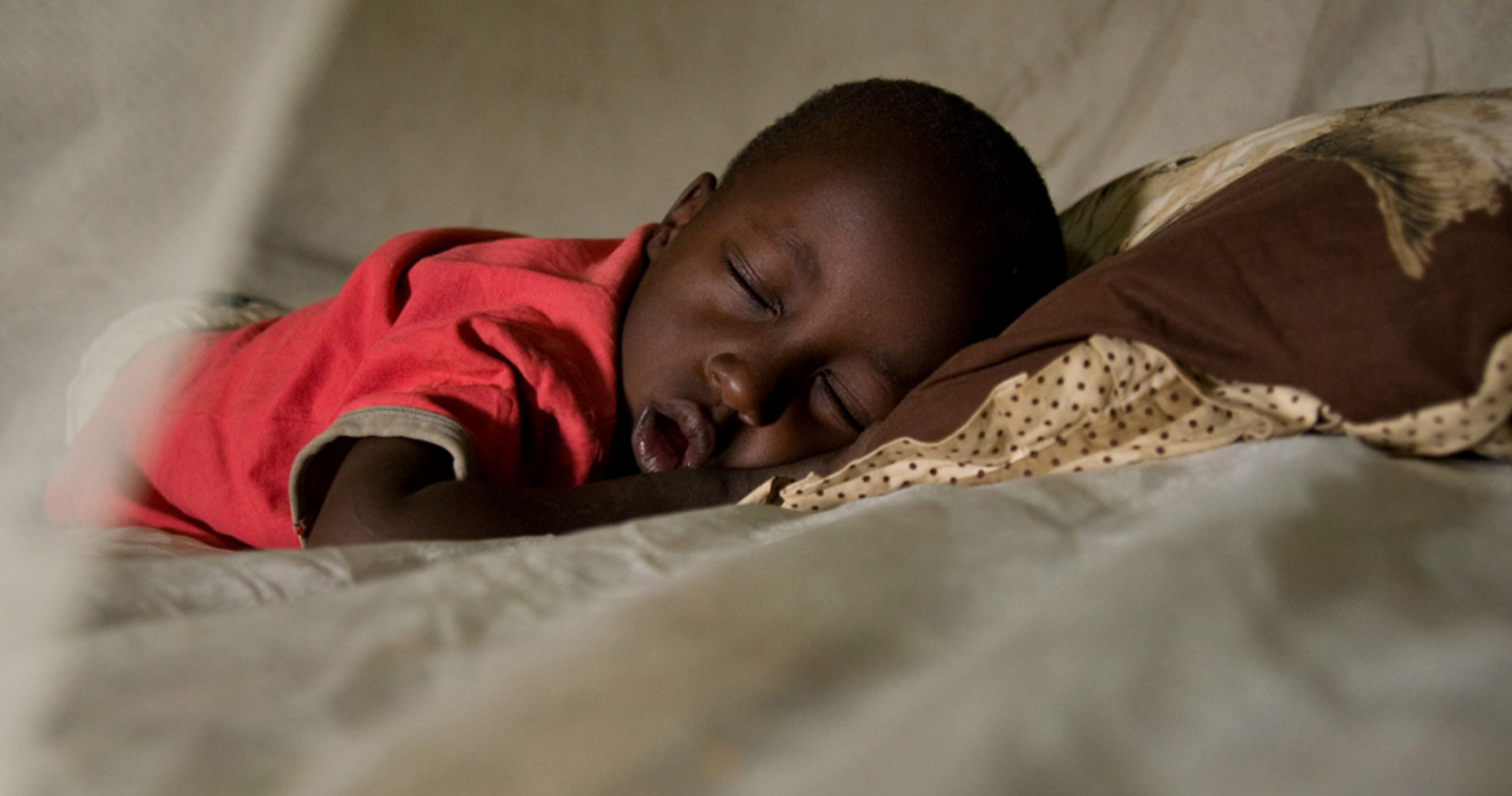To increase the nightly use of insecticide-treated bed nets in Nigeria, new research from the Johns Hopkins Center for Communication Programs suggests that media campaigns be designed to engage both people’s reason and emotions about the threat of getting malaria and its potentially dire consequences.
The study, published last month in the journal BMC Public Health, finds that while it is still important to make sure that campaigns increase knowledge of malaria and how to prevent it, and make it clear that their neighbors are sleeping under bed nets, some level of emotional response is vital to changing bed net behavior in Nigeria.
“Emotions, especially mild levels of fear, are very motivating,” says the study’s senior author, CCP’s Doug Storey, PhD. “If people understand malaria is a serious disease, they’re more likely to act to try to prevent it. At the same time, you need to be careful: Creating too much fear can backfire, leaving people feeling they are helpless and therefore unwilling to consider adopting a new behavior.”
Malaria remains a significant public health challenge in Nigeria. According to the WHO’s 2020 World Malaria Report, Nigeria accounted for 27 percent of all malaria cases globally and 23 percent of the world’s malaria deaths – giving it the highest malaria burden in world. Despite two decades of progress, there were an estimated 229 million malaria cases worldwide in 2019 and, while malaria deaths have fallen steadily since 2000, an estimated 409,000 people died from the disease in 2019. The use of nets, researchers have found, could reduce malaria by up to 59 percent.
The new study was conducted by analyzing data collected in Nigeria from 2012 to 2017 during CCP’s now-closed, USAID-funded project Health Communication Capacity Collaborative. The new analysis focused on a predictive model — ideation — based on which combination of variables exert the most influence. These variables can be grouped into psychosocial domains (cognitive, social and emotional) and analysis is done to determine which domains have the most influence on behavior depending on the setting, health care topic and more.
This study showed what is important in Nigeria; programs in other countries can use the same approach to determine how important emotion is for them, too.
It also looked at the impact of mass media campaigns including radio and TV spots in English, Pidgin, Hausa, and other local languages in five Nigerian states, weekly radio magazine shows, a national malaria theme song (“Play Your Part”) and the Newman Street television drama series.
While messaging in the knowledge domain (understanding basics of malaria and prevention) and the social domain (understanding that net use is a social norm in your community) are both linked to higher bed net use, Storey says, the new study finds that the emotional domain (understanding that you and your family are at some risk to develop malaria) has a larger effect on net-use behavior, especially in combination with the other two.
The researchers also measured the direct impact of those mass media messages on behavior change, finding a dose-response relationship, meaning that the more messages people could recall about bed nets, the more likely they would use those nets to protect themselves and their families from malaria.
“One programmatic implication of this study finding is that social and behavior change interventions should employ messaging that not only improves knowledge about bed net use and its consequences, but promotes a positive attitude about bed nets, generates conversation regarding the use of bed nets and also enables the audience to feel right about it,” the authors say.
“Communication interventions aimed at improving bed net use [also] should consider messages that appeal to the emotional domain (e.g., [confidence or] self-efficacy) such as ‘It is easy to procure and use bed nets because they are widely available from pharmacies and often are distributed free at health facilities.’ Furthermore, messages should be designed to promote the fact that bed nets effectively prevent malaria and that most people in the community use a bed net.”
Storey says that by better understanding what influences behaviors in each context, social and behavior change programming staff can better develop messaging that will move the needle.
“Some people think that when you deliver messages, people will automatically do what they are being told to do,” he says. “Our model shows that there are many complex factors that go into behavior change and that understanding how they work together can help people make life-saving decisions.”
“The role of ideation on the effect of an SBC intervention on consistent bed net use among caregivers of children under 5 years in Nigeria: a multilevel mediation analysis” was written by Osabohien Mathew Okoh; Bolanle Olapeju; Foyeke Oyedokun-Adebagbo; Uwem Inyang; Anna McCartney-Melstad; Ian Tweedie; Stella Babalola and Douglas Storey.





